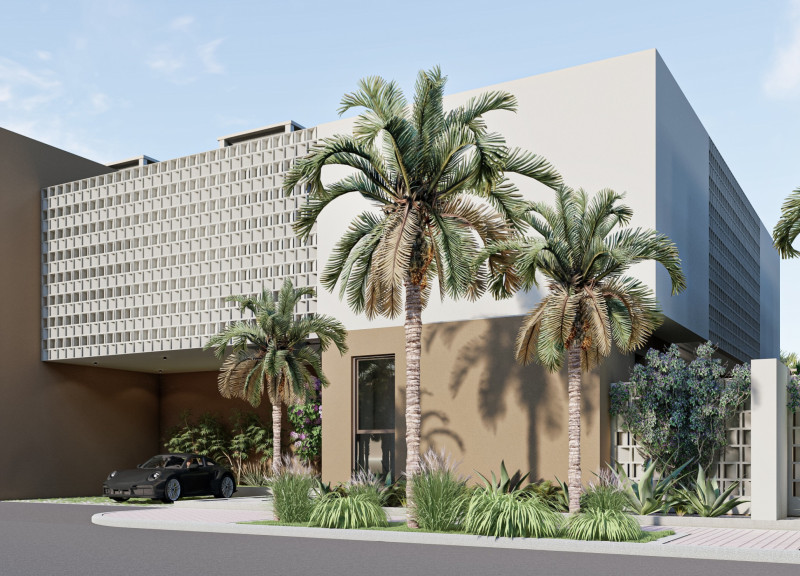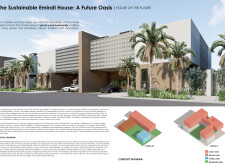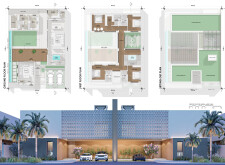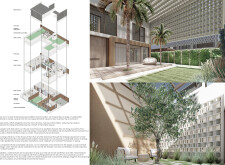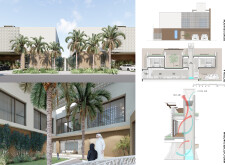5 key facts about this project
### Overview
The Sustainable Emirati House is located within a dynamic and evolving context, designed to align traditional Emirati values with contemporary architectural practices. This residence emphasizes privacy, community engagement, and environmental sustainability, resulting in a home that is both functionally effective and culturally significant.
### Design and Spatial Programming
The villa's layout is intentionally organized into distinct zones that cater to various aspects of family life. The Family Zone fosters connection and communal activities, while the Service Zone provides utility functions discreetly, ensuring that daily needs do not intrude on personal space. The Formal Zone is dedicated to social interactions, embodying the warmth of Emirati hospitality, and the Recreation Zone includes outdoor spaces for leisure. A central courtyard acts as a focal point for gatherings, reinforcing traditional architectural principles while promoting natural ventilation and outdoor living.
### Materiality and Sustainability
The project utilizes materials that enhance performance and support ecological goals. Custom-designed breeze blocks create a visually appealing façade while facilitating airflow and privacy. The inclusion of transparent solar panels on the roof highlights a commitment to renewable energy, complemented by green roofs that improve thermal insulation. Biophilic design elements, such as green walls and terrace gardens, strengthen the connection to nature and enhance biodiversity. Additional sustainable features include advanced HVAC systems, greywater treatment, and the strategic use of local plant species, which collectively contribute to a reduced environmental footprint.


